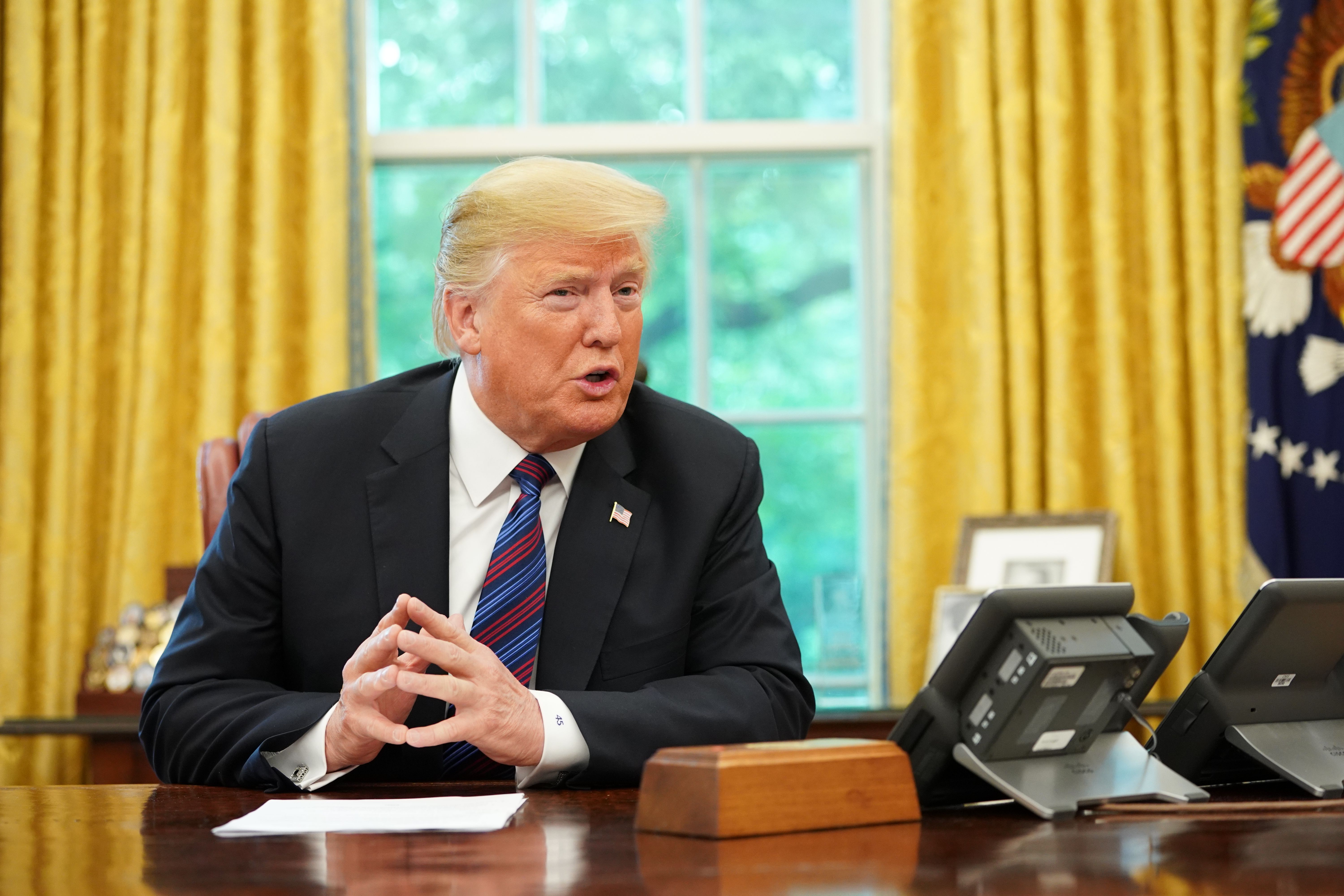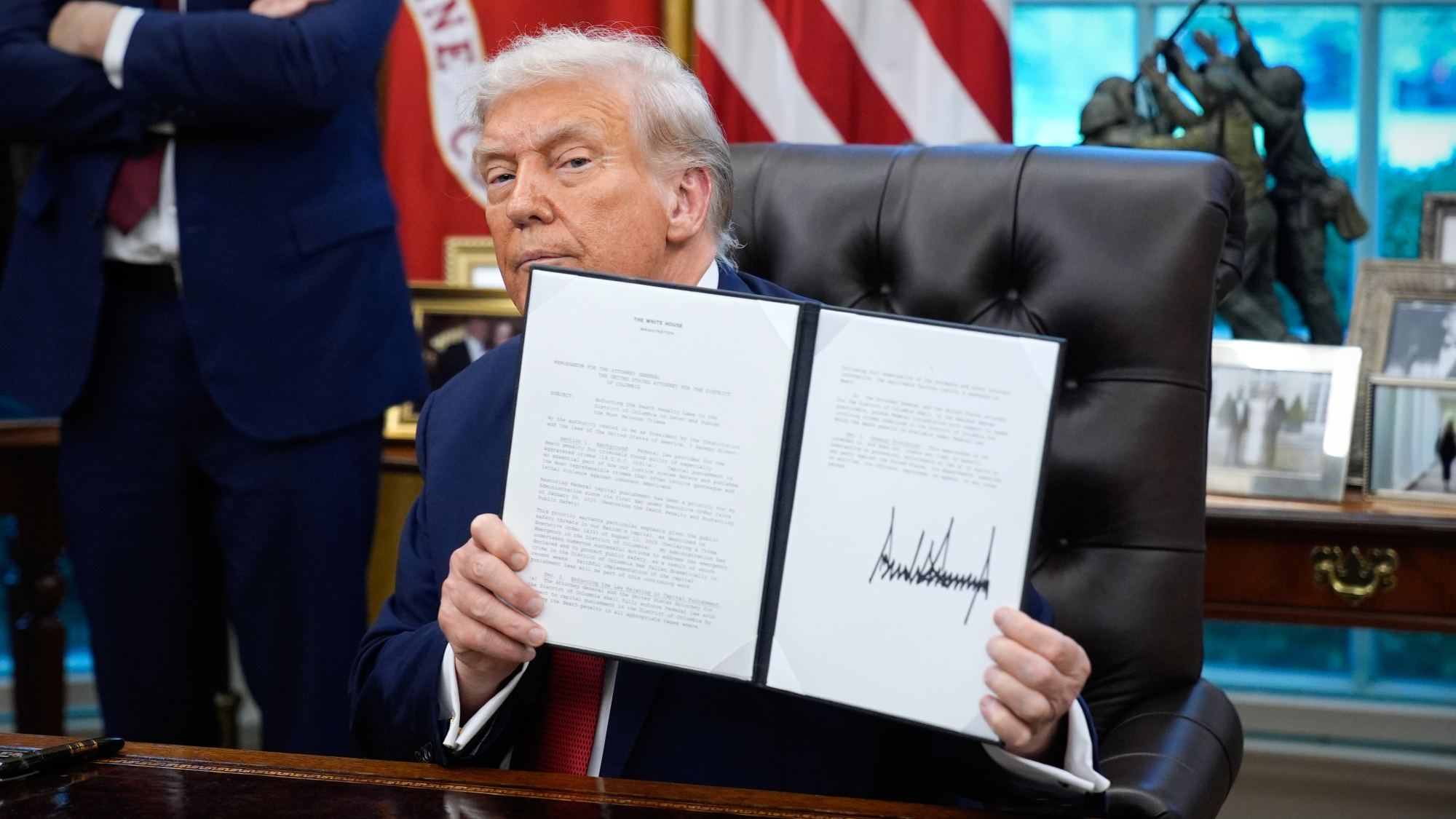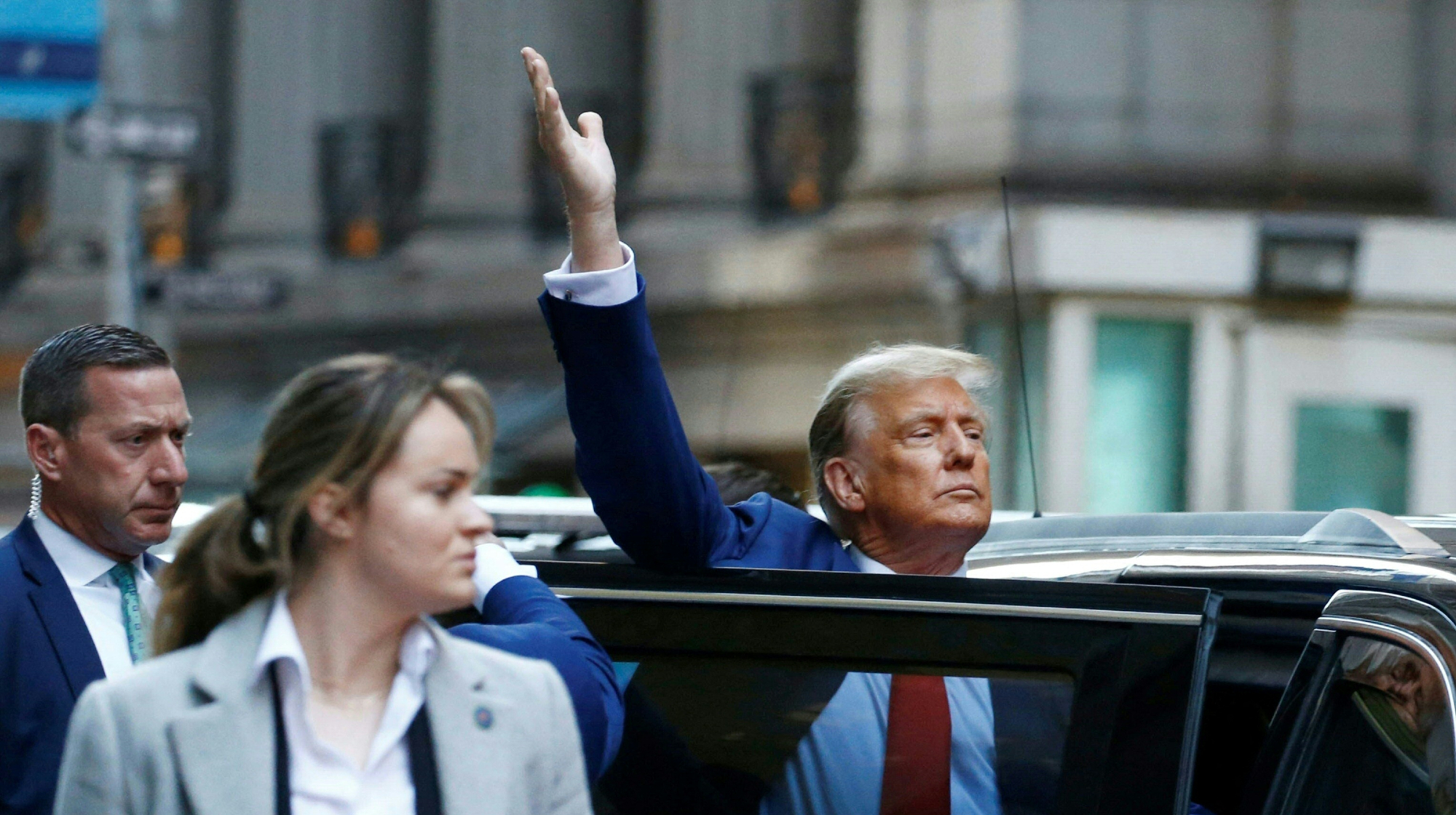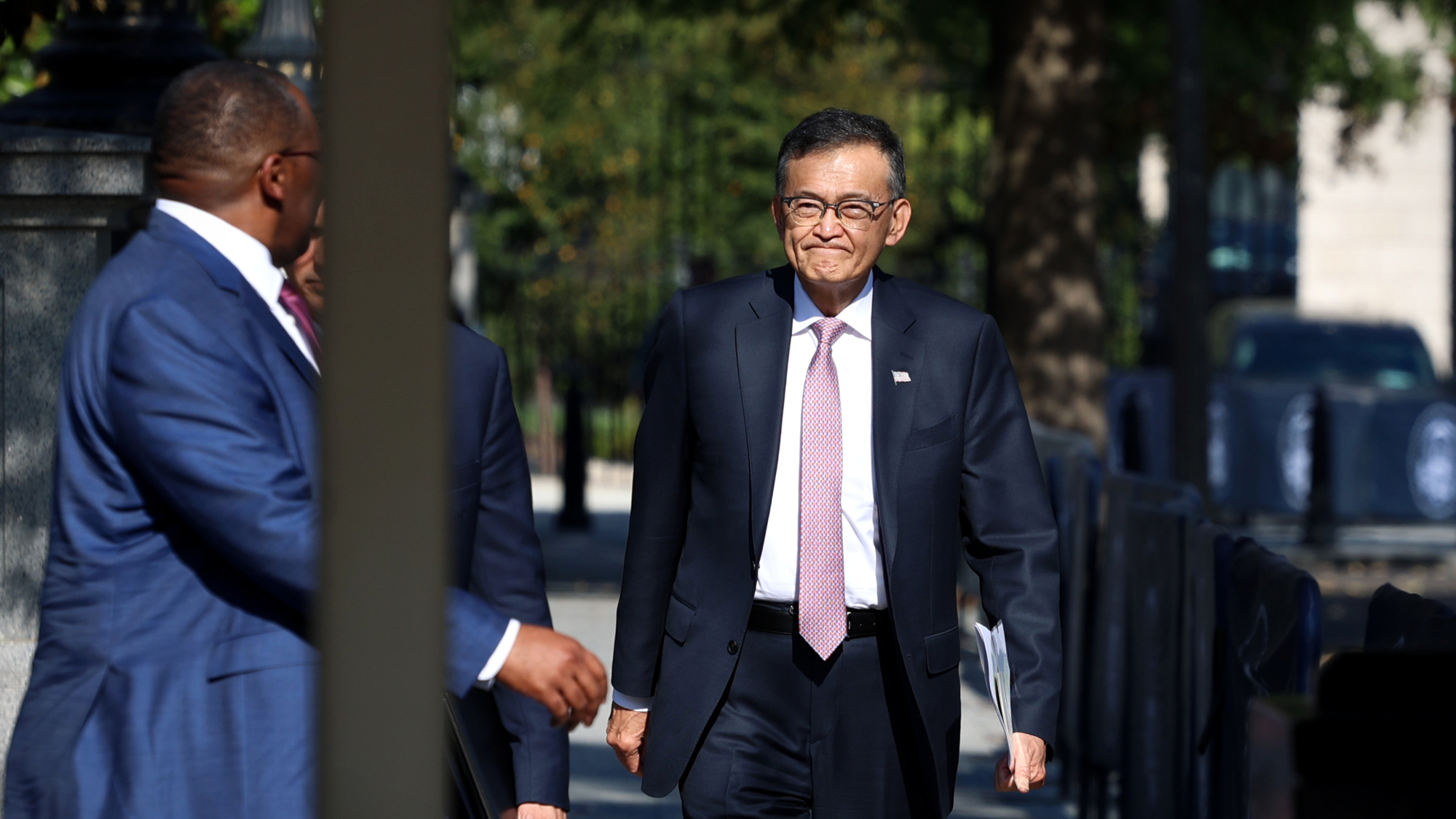Nobody seems really sure what Trump just did with NAFTA, but he didn't 'terminate' it


On Monday, President Trump called in the TV cameras to record a speakerphone call with Mexican President Enrique Peña Nieto on NAFTA negotiations. Specifically, Trump called to congratulate Peña Nieto and himself on replacing NAFTA with what Trump called the United States–Mexico Trade Agreement. (Peña Nieto called it NAFTA.) After a politically brutal week, Trump was claiming victory. He said he was "terminating" the $1 trillion trade deal that has reshaped North America's economies for 25 years, saying the name NAFTA "has a bad connotation" and the "incredible deal" he'd just reached with Mexico is probably open to Canada, too, if it wants to join.
"But what he went on to describe seemed like more of a rebrand than a revolution," says Krishnadev Calamur at The Atlantic, and the end result will likely be "some tweaks to the existing agreement." In fact, "it's not clear Trump can actually terminate NAFTA without congressional approval," and Congress — which has 90 days to give any deal an up-or-down vote — has only authorized trilateral negotiations including Canada, he added. Monday mostly "showcased a strategy where Trump bluffs, rebrands, and claims victory."
Monday's call wasn't about the details. It was showmanship, "a reality show playing out in real time," said David Nakamura at The Washington Post. "Parts of the conversation were so stilted that it took on the air of a hastily arranged photo op. ... Peña Nieto promised Trump, who doesn't drink, a tequila toast," and Trump concluded by saying he'd just sealed a deal with Canada. Then there's this awkward spectacle of Trump trying to patch through the call.
The Week
Escape your echo chamber. Get the facts behind the news, plus analysis from multiple perspectives.

Sign up for The Week's Free Newsletters
From our morning news briefing to a weekly Good News Newsletter, get the best of The Week delivered directly to your inbox.
From our morning news briefing to a weekly Good News Newsletter, get the best of The Week delivered directly to your inbox.
The text of the deal — the Trump administration calls it a "preliminary agreement in principle" — hasn't been released, but the details disclosed Monday contain some significant concessions sought by the Trump administration, notably regarding the auto industry. You can read more about the deal, and the hurdles it still has to clear, at The Washington Post.
A free daily email with the biggest news stories of the day – and the best features from TheWeek.com
Peter has worked as a news and culture writer and editor at The Week since the site's launch in 2008. He covers politics, world affairs, religion and cultural currents. His journalism career began as a copy editor at a financial newswire and has included editorial positions at The New York Times Magazine, Facts on File, and Oregon State University.
-
 ‘Care fractures after birth’
‘Care fractures after birth’instant opinion Opinion, comment and editorials of the day
-
 Shots fired in the US-EU war over digital censorship
Shots fired in the US-EU war over digital censorshipIN THE SPOTLIGHT The Trump administration risks opening a dangerous new front in the battle of real-world consequences for online action
-
 What will the US economy look like in 2026?
What will the US economy look like in 2026?Today’s Big Question Wall Street is bullish, but uncertain
-
 TikTok secures deal to remain in US
TikTok secures deal to remain in USSpeed Read ByteDance will form a US version of the popular video-sharing platform
-
 Unemployment rate ticks up amid fall job losses
Unemployment rate ticks up amid fall job lossesSpeed Read Data released by the Commerce Department indicates ‘one of the weakest American labor markets in years’
-
 US mints final penny after 232-year run
US mints final penny after 232-year runSpeed Read Production of the one-cent coin has ended
-
 Warner Bros. explores sale amid Paramount bids
Warner Bros. explores sale amid Paramount bidsSpeed Read The media giant, home to HBO and DC Studios, has received interest from multiple buying parties
-
 Gold tops $4K per ounce, signaling financial unease
Gold tops $4K per ounce, signaling financial uneaseSpeed Read Investors are worried about President Donald Trump’s trade war
-
 Electronic Arts to go private in record $55B deal
Electronic Arts to go private in record $55B dealspeed read The video game giant is behind ‘The Sims’ and ‘Madden NFL’
-
 New York court tosses Trump's $500M fraud fine
New York court tosses Trump's $500M fraud fineSpeed Read A divided appeals court threw out a hefty penalty against President Trump for fraudulently inflating his wealth
-
 Trump said to seek government stake in Intel
Trump said to seek government stake in IntelSpeed Read The president and Intel CEO Lip-Bu Tan reportedly discussed the proposal at a recent meeting
